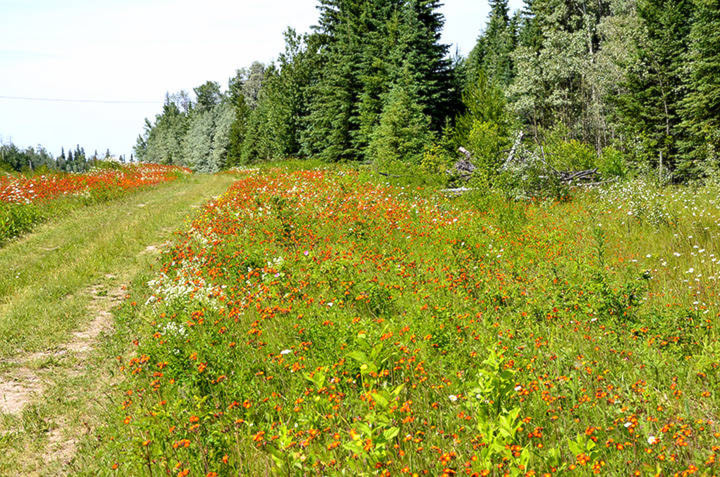Orange hawkweed, an invasive plant that is often mistaken for a harmless flower, is currently ‘out of control’ in the Lakes District area, according to the Northwest Invasive Plant Council (NWIPC).
“Some private property owners only see a pretty flower and they mow around it,” explained NWIPC field coordinator Darrell Hill. “That’s part of the reason why it was able to get away from us.”
Considered ‘extremely invasive,’ orange hawkweed is identified by its bright orange and red flowers assembled in clusters atop leafless stems. Stems are hairy and contain a milky juice. Leaves are also hairy and found in rosettes at the base of the plant.
Although the orange hawkweed is not toxic to humans or animals, hawkweeds out-compete forage plants in hay fields and pastures, and threaten biodiversity by replacing native vegetation.
When it comes to invasive plants, Hill said hawkweeds are the biggest concern in the Lakes District, especially to ranchers. Since hawkweeds thrive on nutrient-deficient soils, local ranchers have been adding a sulphur component in their fertilizer regime, which helps prevent hawkweeds from coming into their ranch.
“Once it’s established, they’ll have to spray it or spend the time to dig it out,” said Hill. “Cows will selectively not eat it.”
This highly invasive plant has been spreading in the Lakes District for the past 10 years, with Hwy. 35 being the starting point and where it has been spreading the most.
“In 2006, hawkweed was a priority for us, and we were managing it actively, but then in 2013 the provincial government decided that it was too far gone, and we were spending too much money,” continued Hill. “We could spend millions and it would still not get it under control.”
The Lakes District is now a “containment area” for hawkweed and is currently not being managed.
“It’s gotten so out of control that it would cost the province too much money to actually manage it,” said Hill. “What we’re doing for a containment strategy is we’ve basically drawn a circle around the densest part of infestation, and everything that’s outside of that circle gets managed; everything inside doesn’t.”
Hill said the provincial government is currently working on a new strategy to help eliminate hawkweed from the region. The strategy includes developing a bio-agent that would kill this invasive plant. However, Hill said it could take at least five more years before this bio-agent is developed, tested and applied in the Lakes District.
Meanwhile the Northwest Invasive Plant Council is working to ensure that other types of invasive plants don’t spread as widely as hawkweeds. Hill said the mountain bluet is also a current concern in the Lakes District. This invasive plant, which can grow up to 80 cm tall and has blue or white flower heads similar to knapweeds, has been escaping gardens and infesting local landscapes.
“It’s another plant that a lot of people think, ‘It’s a pretty flower, it doesn’t spread that much,’” said Hill.
Some of the plants targeted by the NWIPC can have severe impacts - for example, some are toxic to livestock and humans, and some can do extensive damage to river banks and fish habitat, and even to structures and roadways.
The Northwest Invasive Plant Council formed as a committee in 1992, later becoming a not-for-profit organization in 2004. The NWIPC’s goal is to prevent further damage to the ecosystems of the northwest and central B.C. from invasive alien plants.
For more information about invasive plants and how not to spread them, visit http://nwipc.org.



